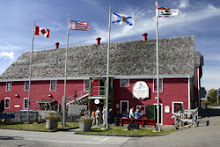This is the first in a series of articles about the care and investigation of family photographs.
Many of us have family photographs that have been passed from one generation to the next. However, we’re rarely lucky enough to have the names, dates and locations included with these treasures. This leads us to try our hand at unraveling the mysteries of the image; while we may never be able to answer all of the questions (like "why" the group has gathered together), we can still learn a lot and have fun.
The historic images that you have are at their peak, in terms of condition. Each passing year adds to their deterioration; visuals fade, the paper becomes weaker and accidents happen. One of the first things that you should do is make a copy of the photograph. Scan it or take it to a professional photography studio. Keep the original in archival-quality storage (search on-line or ask at a local museum or photography shop) and then work from your copied image. If you are fortunate to have the original negative, store it in an archival negative sheet. Again, discussing your concerns with museum or photography specialists is a wise choice.
This is probably a good time to realize that the photographs that you have from your own immediate past require tender care. Scan them to ensure that the images have a viable future and make a written record in terms of who is in the photograph, when it was taken, if it was a special occasion and the location. Never write on the back or front of the photograph! If you keep the images in an album, write on a piece of paper and insert it behind the image; if you are making a scrapbook type album, write beneath the image. At the Fisheries Museum of the Atlantic we often make a photocopy of a photograph and write on the photocopied page. In this way, we can mark on the image and not damage the original.
A further safety precaution is to keep copies of your images and the information in another location. You might consider making it a joint project with a relative, with each of you keeping copies. Remember, the finished product (or even the work-in-progress) makes a cherished keepsake for family members - a wonderful present to give and to receive!
Subscribe to:
Post Comments (Atom)

No comments:
Post a Comment